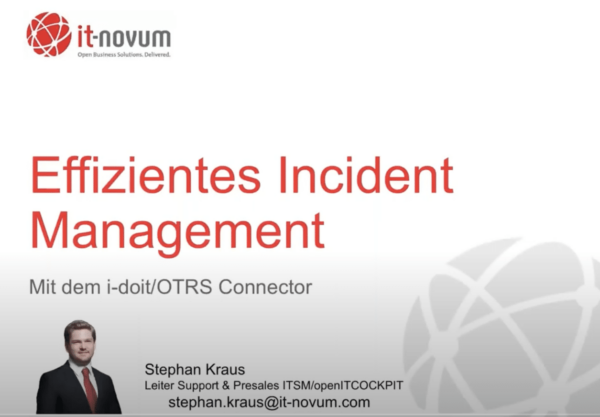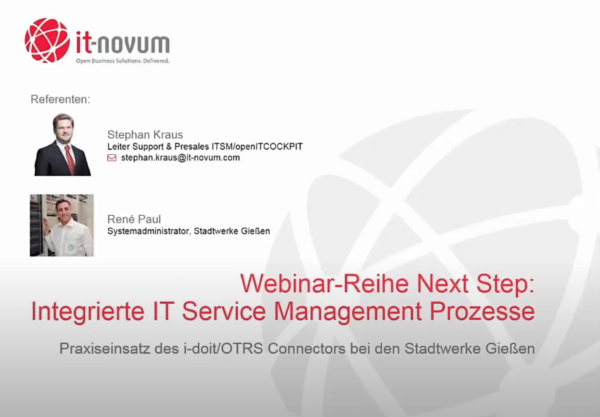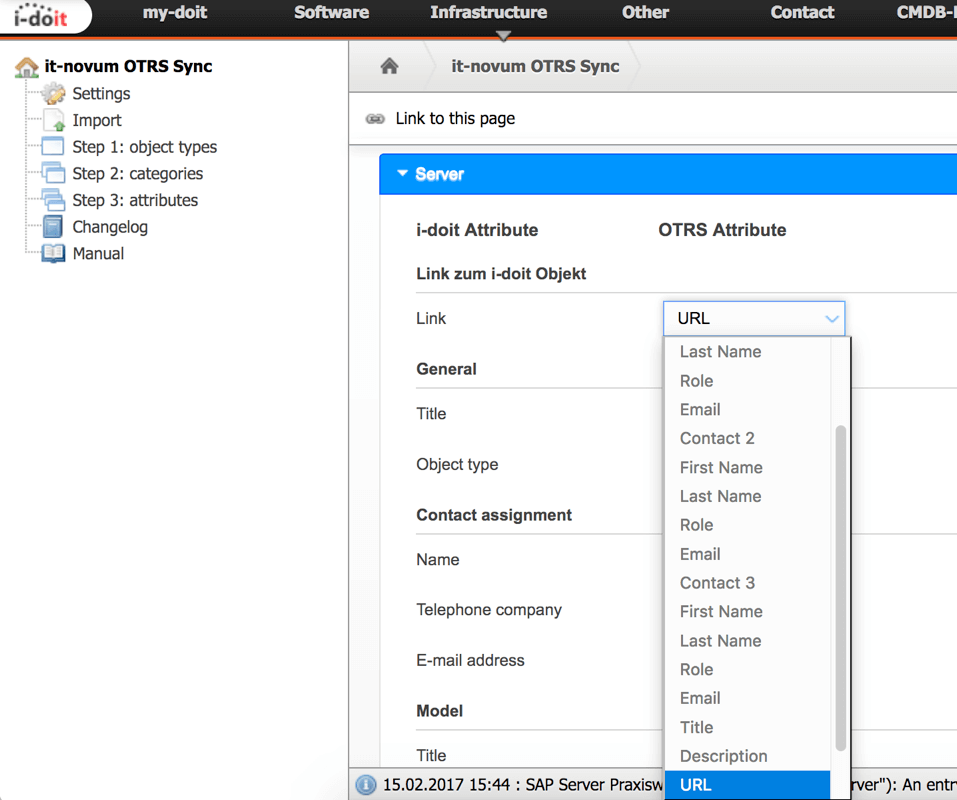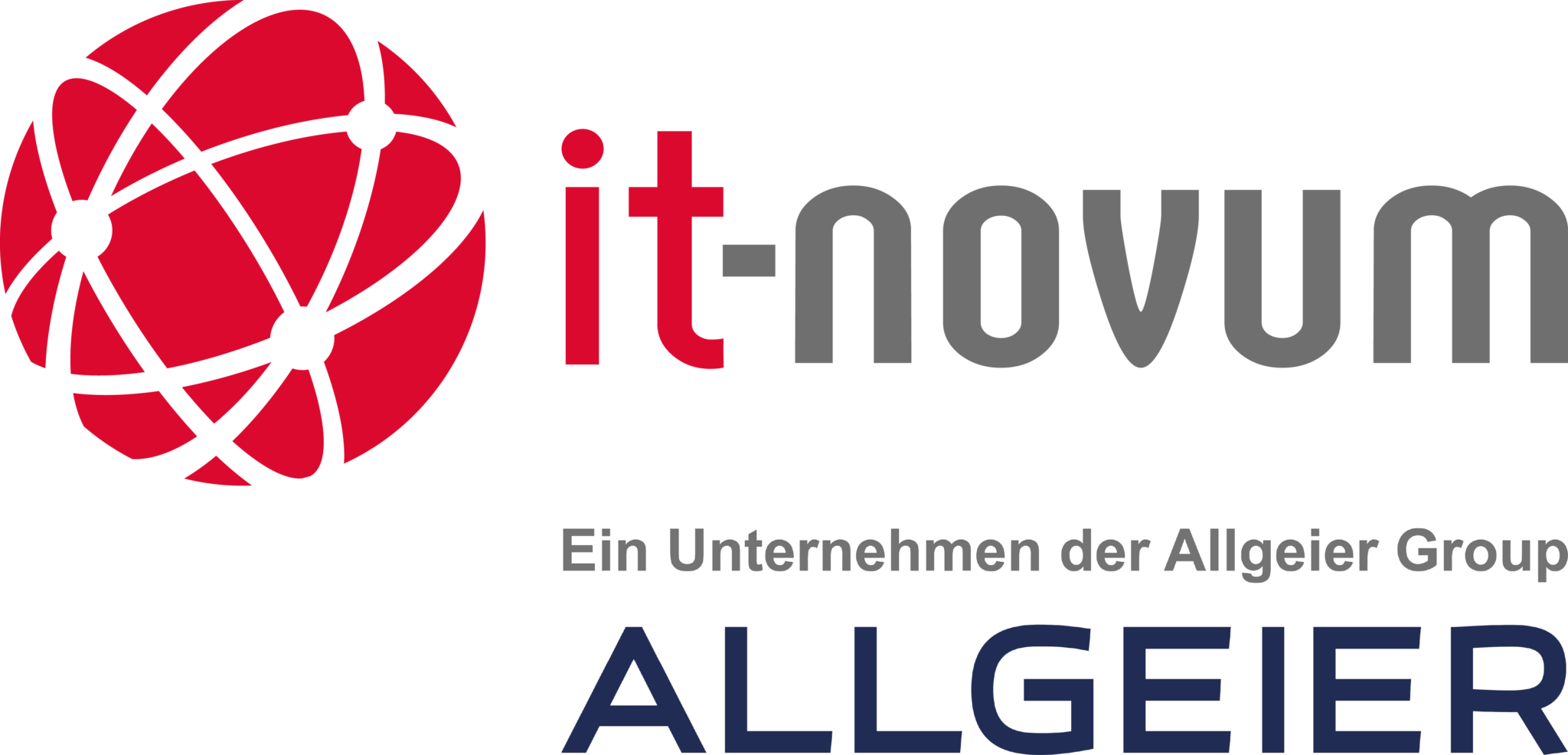i-doit/Znuny Connector
Connecting the ticket system Znuny with the IT documentation software i-doit to one system is no problem thanks to the i-doit/Znuny Connector. The Connector makes it possible to simplify many internal processes, such as the transfer of configuration items (assets/inventories) to Znuny.
The connector, implemented as an i-doit module, keeps CIs (assets/inventories) and service data synchronized between Znuny and i-doit. In this context, i-doit serves as the leading system. Administrators can continue to use i-doit’s extended CMDB functions such as visualising service trees, creating an inventory using JDisc or producing operating or emergency manuals. At the same time, the current CMDB is fully available in Znuny’s IT Service Management: this means that links to tickets, CIs, RFCs, Change and much more are possible.
Advantages of the i-doit/((OTRS)) Community Edition Connector
CMDB fully functional available in Znuny
No installation on Znuny side necessary
No need to update the connector during Znuny updates
Free choice of information to be synchronized from i-doit to Znuny
Synchronized CIs can be maintained as classes in Znuny
The i-doit/((OTRS)) Community Edition Connector can be used with all OTRS versions:
- OTRS™
- ((OTRS)) Community Edition
- Znuny LTS
Service description i-doit/((OTRS)) Community Edition Connector
Administrators particularly value i-doit’s intuitive nature and its ability to create visualisations of the CMDB. For example, contract term durations can be better managed and used to trigger notifications. And with JDisc, it’s even possible to integrate an automated inventory. The i-doit /Znuny Connector enables the use of CMDB information from i-doit as a component in ITIL-compliant IT Service Management with Znuny.
A mapping is used in the configuration of the connector to determine which information from i-doit is relevant for the service desk and in which classes/attributes these are stored in the CMDB of Znuny. Only updated values are transferred into the system. This means that after the initial setup has been completed, only a very small amount of web traffic is created. Each update is documented in the history of Znuny in an audit-proof manner.
Mapping from i-doit to a dedicated Znuny class also means that multi-client capability is given. Multiple i-doit instances can be connected to a central Znuny.
The service agent in Znuny can read the CIs from i-doit: Links to incidents, RfCs or changes, for example, are possible. Conversely linked tickets, change requests or FAQ entries are displayed in the CI view so that all processes related to a CI can be seen at a glance.
An easy-to-use wizard is also available to help with configuring the interface. This wizard walks the user through each step of the information gathering process and when completed, even starts the synchronisation of the chosen objects.
The actual communication is done via a web service in Znuny that addresses i-doit’s API. The user can also configure how often synchronisation should take place.

Stephan Kraus
Director IT Service Management
You want to test the i-doit / Znuny Connector?
Our webinar series "The Next Step: Integrated IT Service Management Processes"
These videos are aimed both at users who are just implementing ITSM as well as advanced users who want to further optimise their existing IT service management system.

Efficient incident management with the
i-doit/((OTRS)) Community Edition Connector
In our first video we show how you can automatically populate the ((OTRS)) Community Edition ticketing system with the relevant information required by the service desk using the i-doit/((OTRS)) Community Edition Connector.
The information presented applies equally to Znuny.
Practical Application of the i-doit/((OTRS)) Community Edition Connector at Stadtwerke Giessen
Working with a specific example, our second video demonstrates the use of the connector in a practical, real-world setting. You can see how system administrator René Paul from Stadtwerke Giessen combines the ((OTRS)) Community Edition ticketing system with the i-doit IT documentation software to create an integrated solution..
- Description of a standard workflow (setting up a new employee)
- Processing process of an incident at the service desk
o Receipt via the intranet
o Receipt via monitoring tool openITCOCKPIT - Connector process integration
- Benefits derived through the use of connectors at Giessen
The information presented applies equally to Znuny.


i-doit/((OTRS)) Community Edition – Implementing help desk workflows with the CMDB and ticketing system
In our third video we demonstrate:
- Using synchronised data from i-doit in ((OTRS)) Community Edition processes
- Supply management using the CMDB status
- Automated and telephone-based incident management
The information presented applies equally to Znuny.





